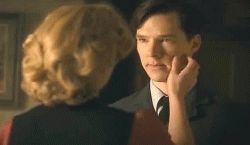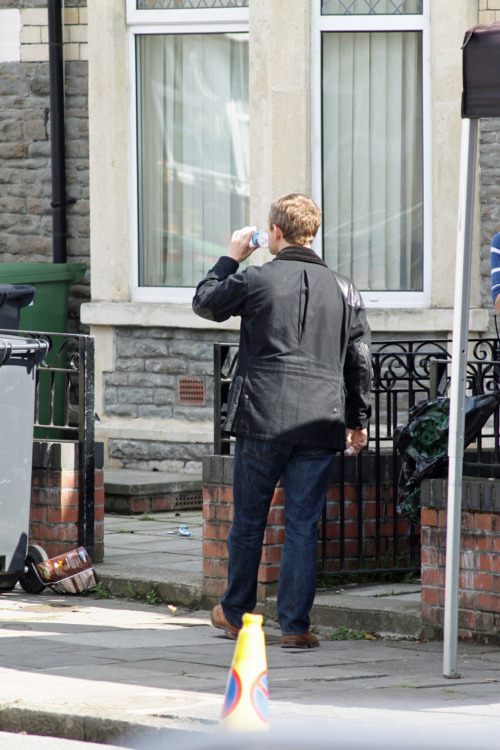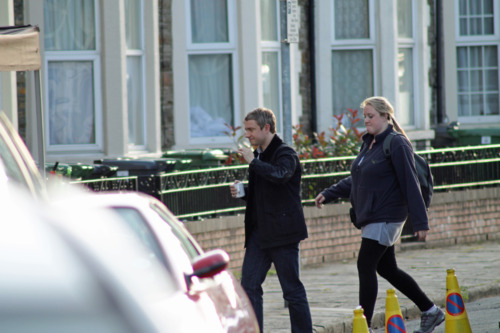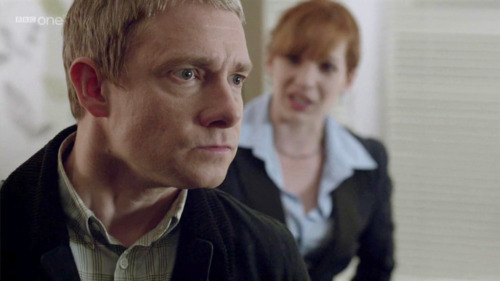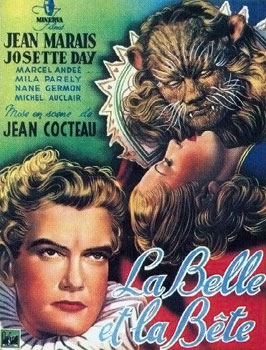The first step to creating the boards was to write the script (seen further below and attached to the final boards directly below). The script was conceptualized over time. The initial idea grew from scenes such as:
Idea: an old book opens and a paper flower lifts itself from the pages (photo slow motion), a dark swirl (CG) spirals up and the flower turns into a girl.
 |
| Book opening scene: incorporating the medium of a book to imagery in the story. |
expanded idea: the book pages are opened from the paper flower pushing against the pages, as the book opens two flowers (one dark, one light) are reaching for each other - then the book opens and they are separated.
Initial idea on the head-swinging scene:
 |
| A Quick Sketch of frames by Nicole Wilk |
1) Close-up of 2 sisters, hair blowing towards each other
2) They start to pull apart
3) When the camera stills one sister is on a hill, mounted on a goat, the others head is bodiless and dangling from a window
4) The head is moving back and forth like the insides of a grandfather clock: time is of the essence
5) We see a hoarde of orcs
6) the camera pans through the horde of orcs, backing further away from the swinging head.
7) the horde and Tatterhood are about to face-off
8) the horde move in closer to Tatterhood
9) Tatterhood pauses and takes a moment to herself, she lowers hew wooden spoon
10) she clenches the wooden spoon and starts to move towards the orcs
Initially the trailer was going to merge three scenes from the book into a more metaphorical demonstration of the story. The blooming flowers. The decapitated head. The hood falling back from Tatterhood and the camera panning away as she speaks a key line from the book.
However, concentrating on just one aspect of the story felt more compelling. Though the idea of captioning events (as seen in movie trailers) with a black screen and tantalizing words such as "embark on a twisted journey with two sisters as they..." can be effective, we thought that too was telling. Our trailer is meant to be an experience, to trap the viewer in a moment that will make them hold their breath and then ask the question: what happens next? What did I experience? What story is this?
To research what a book trailer is, in order to move away from the familiar movie trailer, I performed an online search. Book trailers are still defining themselves and have yet to create effective stereotypes. In fact, most book trailers that were easily accessible online were at a low standard.
For example, a site called BookTrailers listed their first trailer from a book titled "Keeping Misery Company" by Michelle Larks. The trailer incorporating an audio track from a CD that had a vocalist singing lyrics. This distracted from the constant white-cursive font on a blue background enticements like, "Can Divine Intervention Save This Marriage?". The audio abruptly cut off when the trailer finished, and the font enticements were hard to read not only because of the audio lyrics, but for the poor font and colour choices. Imagery was stock-photo's that appeared random and didn't fit the screen size, not only were they poorly selected, they did a poor job of representing, least of all enticing a reader, to purchase the book. This trailer is poorly constructed, but more than that, similar trailers could be found online leaving a poor reference, and no room for inspiration.
When I designed my storyboard I wanted to convey a trailer that created a desire to find the story. I want to entice the viewer to locate the story and consume it. I incorporated my book trailer as a teaser, hinting at one aspect of the book, as well as the story's history, in order to create a piece that is enjoyable to experience as well as reflects the story.
The STORY BOARDS
The SCRIPT
I wrote the script to incorporate the visual and audio mediums, and explain what is happening in each new frame as simply as possible.
Writing an understandable script is the first step to a successful media project (I mean this without exception). The script provides a solid understanding of the story, the audio, and the visuals. With a well-written script the thought process of the work should be understood by all parties involved, not just the writer/director. As I am part of a time, the script I write must not be understandable only to myself, but all partied involved if I want us to create towards a specific endgoal.The artist/photographer/filmer can begin character and set design, and the audio technician can locate/record/create the sounds necessary for the piece, once the script is released.
The script is the explanation to all parties involved, having a poor script leads to miscommunication, and having no script leads to constant reshaping of the idea and concept. At the same time that I worked on TATTERHOOD, another group doing a video project relied on a group member who did not produce a script, this reflected poorly in their work. Repeated use of specialized video transitions with the camera, flow-less camera angles, and on-scene creation of how the plot will pan out is not an effective use of time. The group was left to shoot, re-shoot, and redesign their idea as the story came together in editing. And then they had to shoot, and re-shoot again. To prevent this, solidify the idea with the script. Having a solid script will expedite all other processes of the work. Even if the work changes and grows while you work on it, the idea is growing from a solid design concept.
Prior to releasing this version of the script it was seen by a number of eyes in search for improvement. The original script did not incorporate the teasing hands of the trolls to hint to the sisters' kidnapping that was about to occur. The script will likely change once more once the visuals and audio
TATTERHOOD (A BOOK TRAILER) by Nicole Wilk
SCENE ONE
A head ghosts over a black screen, swinging like the ticking of a clock, leaving
disjointed shadows of itself in the motion, long hair twists in the air.
SFX
grandfather clock’s pendulum swinging
SCENE TWO
The feet of Tatterhood (left) and her sister (right). A slow pan up. Their
cloaks are billowing in the wind, Tatterhood’s cloak is blue and tattered, her
sisters’ cloak is purple and pristine.
Screen fades. A gnarled hand (belonging to
trolls, clearly not human) comes into the frame.
SFX
tick
Cut to new
frame.
The girls have their hands up as if touching
the other is like touching a mirror. The pan stops at their chins. You can see
that Tatterhood has dirty red hair in tangles, her sister combed blonde locks
in contained elastics.
Screen fades. A gnarled hand (belonging to trolls,
clearly not human) comes into the frame from a different angle. Only one hand
visible.
SFX
tock
Cut to new
frame.
Zoom in to their touching palms. Tatterhood’s
palm is scratched and dirty. Her nails are short. Her sisters’ are clean with
well-kept nails.
Screen fades. A gnarled hand (belonging to trolls,
clearly not human) comes into the frame from a different angle. Only one hand
visible.
SFX
tick
Cut to new
frame.
SCENE THREE
Close-up of the sisters’ face, her eyes are wide. Gnarled hands (belonging to trolls,
clearly not human) come into the frame, covering her eyes and clutching around
her head.
The images turn to silhouettes and the trolls
lift the sisters’ head from her neck.
SFX
POP
The screen goes black.
SCENE FOUR
The head from the first frame repeats with the slow motion.
SFX
grandfather clock’s pendulum swinging
SCENE FIVE
The background fades into focus, the sisters’ head is swinging within a tower.
SFX
grandfather clock’s pendulum swinging
Zoom out, troll’s are crawling on the tower.
SCENE SIX
Tatterhood is mounted on a goat, her hand clenching around a large wooden
spoon. Screen fades.
The head swings from one side of the frame to
the other.
SFX
grandfather clock’s pendulum swinging
Cut. Closer in. Tatterhood is mounted on a goat, her hand has
risen, she is holding the large spoon as if it were a mace.
The head swings from one side of the frame to
the other.
SFX
grandfather clock’s pendulum swinging
Cut.
Close in on Tatterhood’s face; her mouth.
TATTERHOOD
(whisper)
I
can change it…
The screen fades to black.
SFX
grandfather clock’s pendulum swinging
TATTERHOOD
(CONT)
(whisper)
…if
I choose.
SCENE SEVEN
Text of the book title artistically and slowly reveals itself.
TEXT
TATTERHOOD
TEXT (CONT)
Version by Ethel Johnston
Phelps, Pamela Baldwin-Ford
SFX
grandfather clock’s pendulum swinging
SCENE EIGHT
The head swings (from the first scene), and is caught by Tatterhood’s dirty
hand which cusps the sisters’ cheek.
SFX
grandfather clock’s pendulum swinging
As the head and hand connect the sisters’ eyes
open and bore straight into the viewer.
Cut to black.
SCENE NINE:
Credits.
TEXT
By Nicole Wilk, Ying Shan, & Roshanth Nadesapillai
The ART
The art was drawn, photographed, and assembled in the span of seven hours. Originally the art was drawn in order to represent the idea of the script, and was not incorporating the art style of the trailer video. The group decided the art was a good fit as seen on the boards, an opinion enhanced by a peer review session during an animation class. As such, the art was fixed up to show a more enhanced version of what will be done in the final project.
 |
| first board |
 |
| second board |
The COLOUR STUDY
The ORIGINAL ART (storyboards)
The art that was used for the storyboards (full version). As photographed in the roughest form. The use of light is reflected in the art boards (the green of the hands, the blue by the spoon). Light was controlled by natural and artificial use and placement.
REFERENCED ART
When the storyboard was
written new references were sought (see previous post) to speed along the drawing process.
The following images were used to assist the conceptualization with the boards.
 |
The hair from the head swinging scene
|
 |
The sister's skirt
|
 |
Tatterhood's mount
|
 |
Tatterhood's cape
|
 |
The troll's tower
|
 |
Tatterhood on her mount
|
 |
the tree's by the sisters (unseen in the storyboard)
|
 |
| the trolls. Source unknown. |

